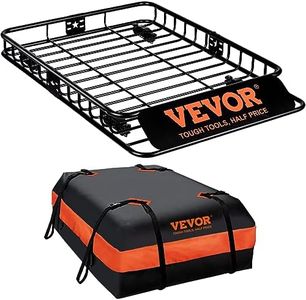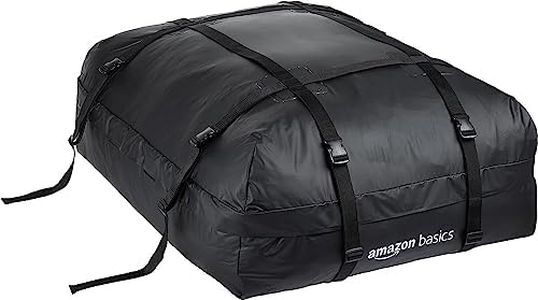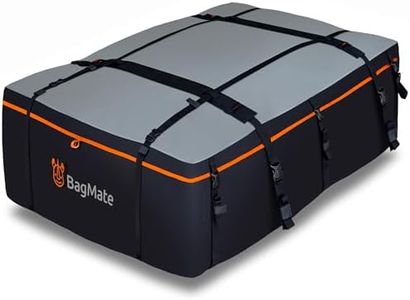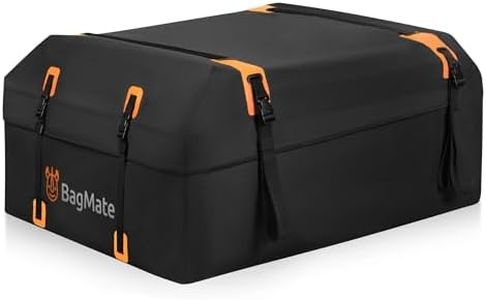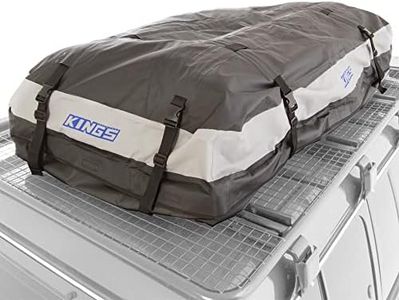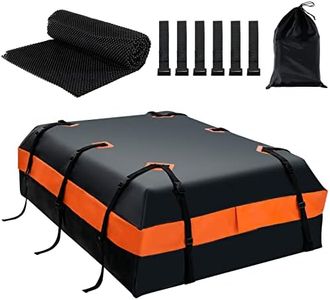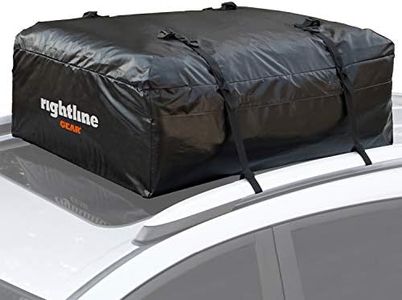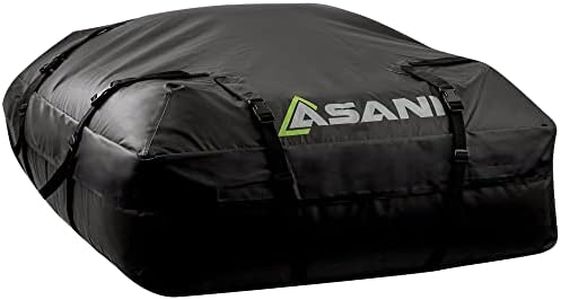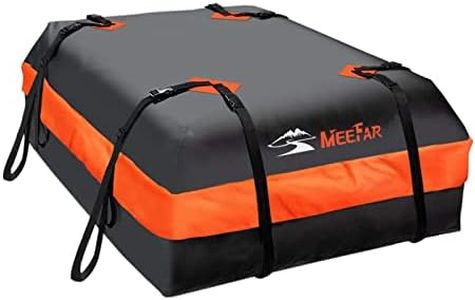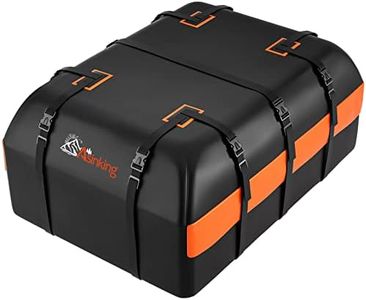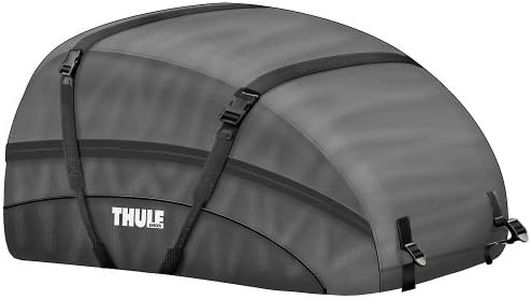We Use CookiesWe use cookies to enhance the security, performance,
functionality and for analytical and promotional activities. By continuing to browse this site you
are agreeing to our privacy policy
10 Best Roof Top Cargo Carriers
From leading brands and best sellers available on the web.Buying Guide for the Best Roof Top Cargo Carriers
Choosing a roof-top cargo carrier can greatly improve your traveling experience by providing extra storage space for luggage, sports gear, or camping equipment. The right carrier will depend on your vehicle, the type of items you want to carry, and your typical travel needs. It's important to consider how often you'll use it, the types of trips you’ll be taking, and what convenience means for you—like ease of loading, fuel economy, and noise on the road. Start by thinking about what you’ll usually pack and how much additional space you really need. Carefully review the specifications before buying, and make sure that your car’s roof can support a carrier and the combined weight of your cargo.Capacity (Volume)Capacity, usually measured in cubic feet or liters, tells you how much stuff you can fit inside the carrier. It’s one of the most important specs because it determines whether you’ll have enough space for everything you intend to transport. Small carriers (under 12 cubic feet) are good for a few bags or light travel, while medium carriers (12-18 cubic feet) suit families or moderate packing needs. Large carriers (over 18 cubic feet) accommodate lots of luggage or bulky gear. To make the right choice, think about your usual load and avoid picking a carrier that’s unnecessarily large, as it could hurt aerodynamics and be harder to store when not in use.
DimensionsPhysical dimensions (length, width, and height) of the carrier are essential to check, ensuring that it fits on your vehicle’s roof and matches your cargo needs. Some carriers are long and slender, good for skis or snowboards, while others are shorter and wider for suitcases or camping gear. Carefully measure your vehicle’s roof and make sure the carrier won’t hang over or block your rear hatch. Consider what you plan to transport most often and choose a shape that matches those items.
Weight LimitThe weight limit is the maximum amount of weight the carrier can safely hold, not to be confused with how much the roof rack or your car’s roof can support. Staying within this limit is crucial for safety and to prevent damage to both the carrier and your vehicle. Lighter weight limits (around 75-100 lbs) work for smaller loads, while some heavy-duty carriers allow over 150 lbs. Always check your vehicle’s own roof load limit as well and never exceed whichever is lower between car and carrier.
MaterialCarriers are commonly made from hard plastic (hardshell) or flexible fabric (softshell). Hardshell carriers are durable, weather-resistant, and usually more secure, making them ideal if you travel often and need strong protection. Softshell carriers are lighter, easier to store when not in use, and more affordable, but may offer less weather protection and security. Your choice will depend on what you carry, how often you use the carrier, and whether you can store a hard case when not attached.
Mounting SystemThis refers to how the carrier attaches to your car’s roof. Some require crossbars, while others can connect to bare roofs. Simpler systems with easy clamps or quick releases make installation and removal easy for short trips or occasional use, while more permanent mounts are better for frequent travelers. Always check the compatibility with your vehicle’s roof setup and consider how often you plan to attach or remove the carrier.
Opening MechanismThe opening mechanism tells you how you access your cargo—either from the side, back, or both sides. Dual-sided or rear access carriers make loading and unloading simpler, especially when parked close to other cars or in tight spaces. If you often need quick access to your cargo or travel solo, a user-friendly opening system will save effort, so match this feature to your packing habits.
Security FeaturesThis includes locks and reinforced lids or zippers to keep your belongings safe. Lockable hard carriers protect against theft, while soft carriers usually offer basic zippers and may need extra security. If you’ll be parking your vehicle in public places or carrying valuable items, opt for a model with built-in locks and sturdy construction. Lighter security can suffice for quick, infrequent trips.
Weather ResistanceThe ability to keep out rain, snow, dust, and wind is crucial if you plan to travel in varied conditions. Hardshell carriers generally offer better protection, while softshell carriers may need additional waterproofing. If you often travel in poor weather or carry sensitive equipment, prioritize high weather resistance. For mostly dry, fair-weather use, less robust options can still do the job.
